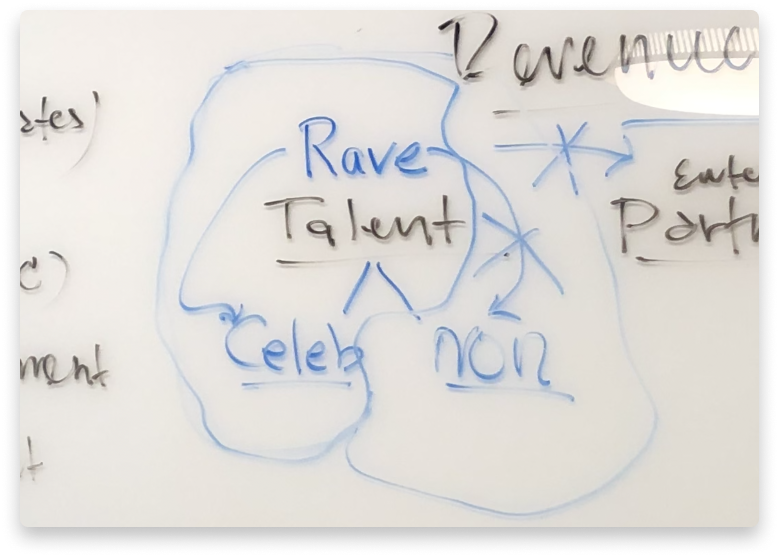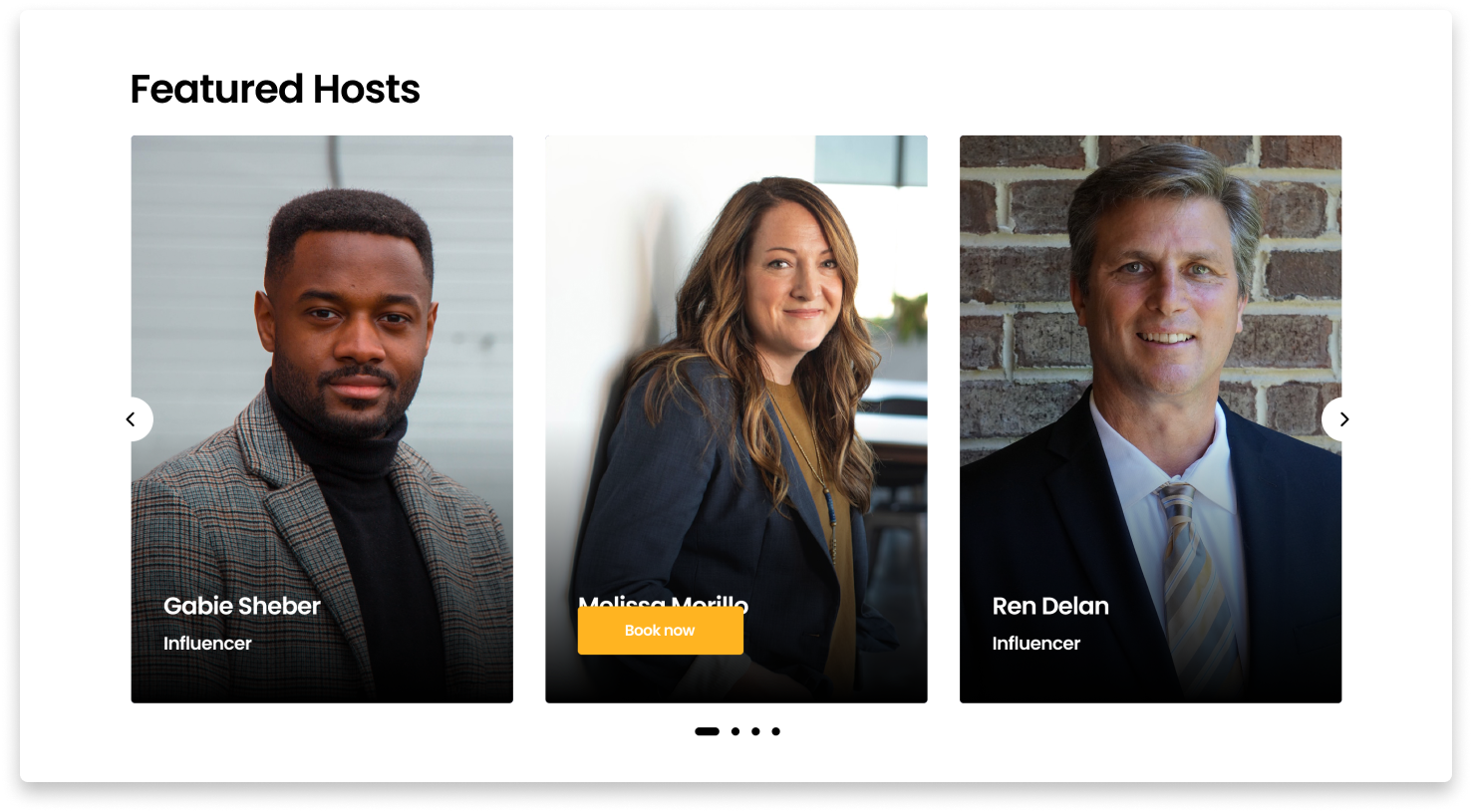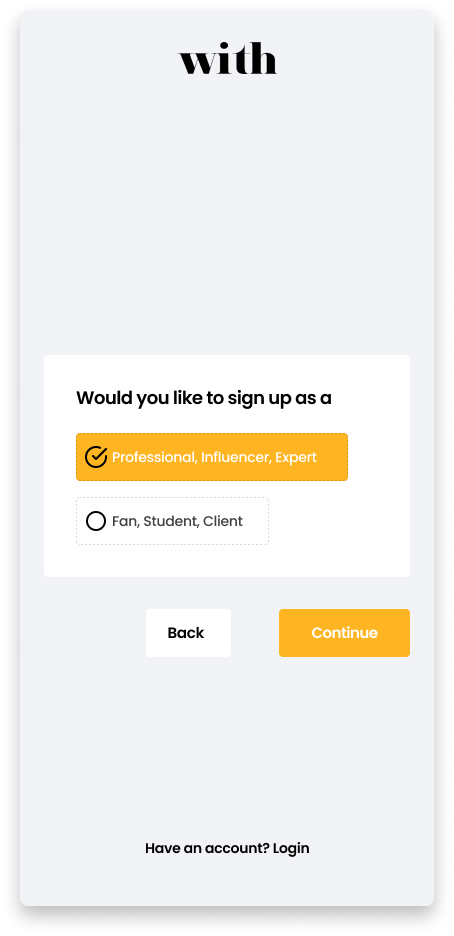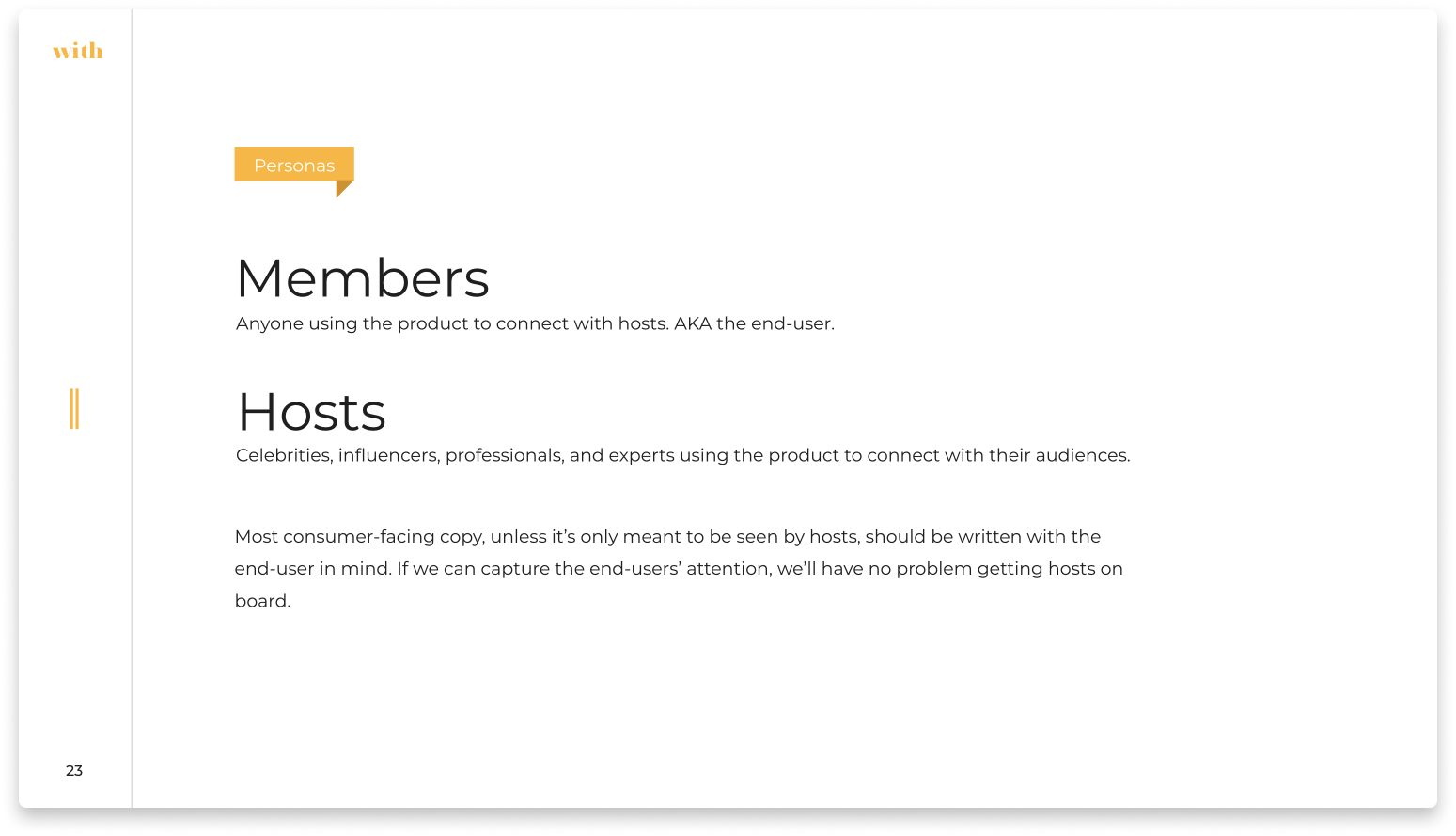With - User Terminology
Project Overview
With is a marketplace where anyone can pay for face-to-face calls with celebrities, professionals, experts, and more.
The marketplace consists of two personas: the individuals hosting the calls (sellers) and the users paying for the calls (buyers).
The goal of this project was to determine how stakeholders could each of the personas on the platform.
The Challenge
With started as a platform for celebrities to have online meet-and-greets with their fans. At that time, the product was called Rave and celebrities were the only sellers on the marketplace. These users were known as “talent.”
As the marketplace grew, more sellers from different backgrounds wanted to use the product — professionals, experts, creators, etc. The term “talent” didn’t accurately depict these users anymore.
Buyers didn’t have a term to represent them as users either. Sometimes, stakeholders would refer to buyers as “users.” Other times they would call them “Ravers.” These terms were also used as a catch-all to describe both parties. Rave was also undergoing a rebrand (from Rave to With) so the term “Ravers” wouldn’t work much longer anyway.
The lack of consistent terminology made conversations internally and with investors very confusing. It cost the company time and money, confused users, and presented problems within the product itself.
This issue was a real sticking point for investors, customers, and the executive team.
The Ask
How could With refer to both of its user types in a way that made sense and helped its users feel like their identities were accurately portrayed?
Business Needs
Increase clarity in internal and external conversations
Codify terminology so the product was consistent
User Needs
Ensure users felt they were accurately represented
Create clarity for users as they navigated the platform
User Research
To begin, we talked with celebrities, experts, and creators on the platform to better understand the role they felt they had in the marketplace. These users told us they enjoyed “meeting with their fans,” “talking with people,” and “hosting new experiences.”
We also spoke with buyers on the marketplace, seeking to understand how they referred to sellers. In each instance, we learned buyers referred to celebrities as “influencers” or “celebrities,” but weren’t using a term to describe the group as a whole.
In talking with sellers, we learned they wanted to feel like they were part of a community. They saw With not just as a marketplace, but almost as a social network.
Process
After many conversations with sellers, we created a list of potential names to refer to sellers. The list included,
“Influencers,”
“Creators,” and
“Partners.”
We also explored not having an umbrella term for this group, breaking them down into smaller groups like “creators,” “celebrities,” and “professionals.”
Sellers represented an even larger tapestry of backgrounds. Some were fans, some were customers, and some didn’t know how they would refer to themselves. Any efforts to individually classify these users in a way that would be helpful for the company and audience were fruitless.
Strategy
After talking with our audiences, collecting our insights, and brainstorming ideas it became clear — we would need no more than two terms to use when referring to these groups.
The Solution
After hours of brainstorming and user conversations, I presented two terms to our executive team: “hosts” and “members.” The term '“hosts” reflected the action sellers were taking on the platform as well as the language they were already using.
There was also already precedence for this term on other platforms that allowed people to sell digital experiences (i.e. Airbnb). The term “members” reflected buyers’ desires to be part of a larger community and was flattering enough to be used in customer-facing situations (as opposed to users).
Testing & Results
The new terms, along with other options, were presented to multiple stakeholder groups:
Executives
Investors
Buyers
Sellers
Testing groups were small, but the results were clear. “Hosts” and “members” were overwhelmingly preferred over other choices. This was also evident in their behavior – each group began using the terms in natural conversations about the product.
As the names became a more concrete part of the product’s culture we felt comfortable enough to add them to our new product designs.
We were careful to only use the terms when the customer had enough context to understand their meaning. For instance, during onboarding, a collection of terms is used instead of the larger umbrella terms.
“Hosts” and “Members” became the official brand terminology for internal and external uses. A style guide was created to ensure the names were used consistently across the brand.
The names are now a central part of the With platform. Executive teams no longer spent hours discussing which terms they should use when referring to customers, stakeholders are no longer confused when customer groups are discussed during meetings, and users clearly understood product copy when it referred to distinct groups of users.
My Role
I played an integral role in persona design, product design, branding, information architecture, product terminology, wireframing, flow charts, research, and UX writing.




